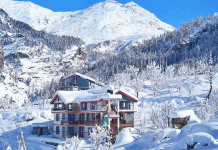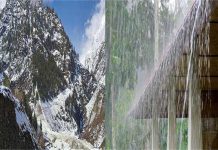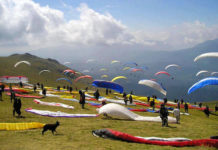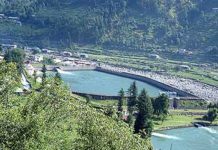Scientists from the Defence Research and Development Organisation (DRDO) and Pune University’s Department of Geology examined the variation in precipitation (snowfall and rainfall) in the region and found that warming has led to a delay in the onset of winter and a reduction in snowfall.
The study published in the International Journal of Climatology from the Royal Meteorological society, Britain, found that northwestern Himalayas have warmed at the rate of about 1.4 degrees Celsius in the last century compared to the global range of 0.5 to 1.1 degrees Celsius.
‘The interesting finding of the study is the unusually high rate of increase in both maximum and minimum temperatures in the last three decades in the northwestern Himalayan region (NWH) whereas in other high altitude mountainous regions of the world such as the Alps and the Rockies, the minimum temperature has increased more rapidly than the maximum,’ M.R. Bhutiyani, a DRDO scientist who led the study, told IANS.
‘The warming on the NWH has been because of both maximum and minimum temperature increasing at a higher rate, with maximum temperature increasing more rapidly,’ said Bhutiyani, who is also head of the Department of Geology at the College of Military Engineering, Pune.
The data for the NWH region spread over Jammu and Kashmir and Himachal Pradesh was collected from the India Meteorological Department (IMD), the Snow and Avalanche Study Establishment (SASE) in Manali and the Indian Institute of Tropical Meteorology.
The study also indicated a significant decreasing trend in monsoon and annual overall precipitation during the period 1866-2006.
‘The alarming aspect of it is that the winter precipitation consists now of more rainfall and less snowfall. Effective duration of winter has been curtailed with the late onset of winter and the early onset of spring. This, in turn, has directly influenced the ecology of the area,’ said Bhutiyani.
The study found that less snowfall followed by early melting of the snow has resulted in a changed water balance in the catchments.
Conforming to the global trends, the study said that the glaciers in the NWH have shrunk considerably in the last three decades, indicating major ice-loss.
‘The research points towards the fact that a significant increase in air temperature, coinciding with the industrial revolution and enhanced anthropogenic (human related) activities may have resulted in warming of the region and climate change,’ Bhutiyani added.




































